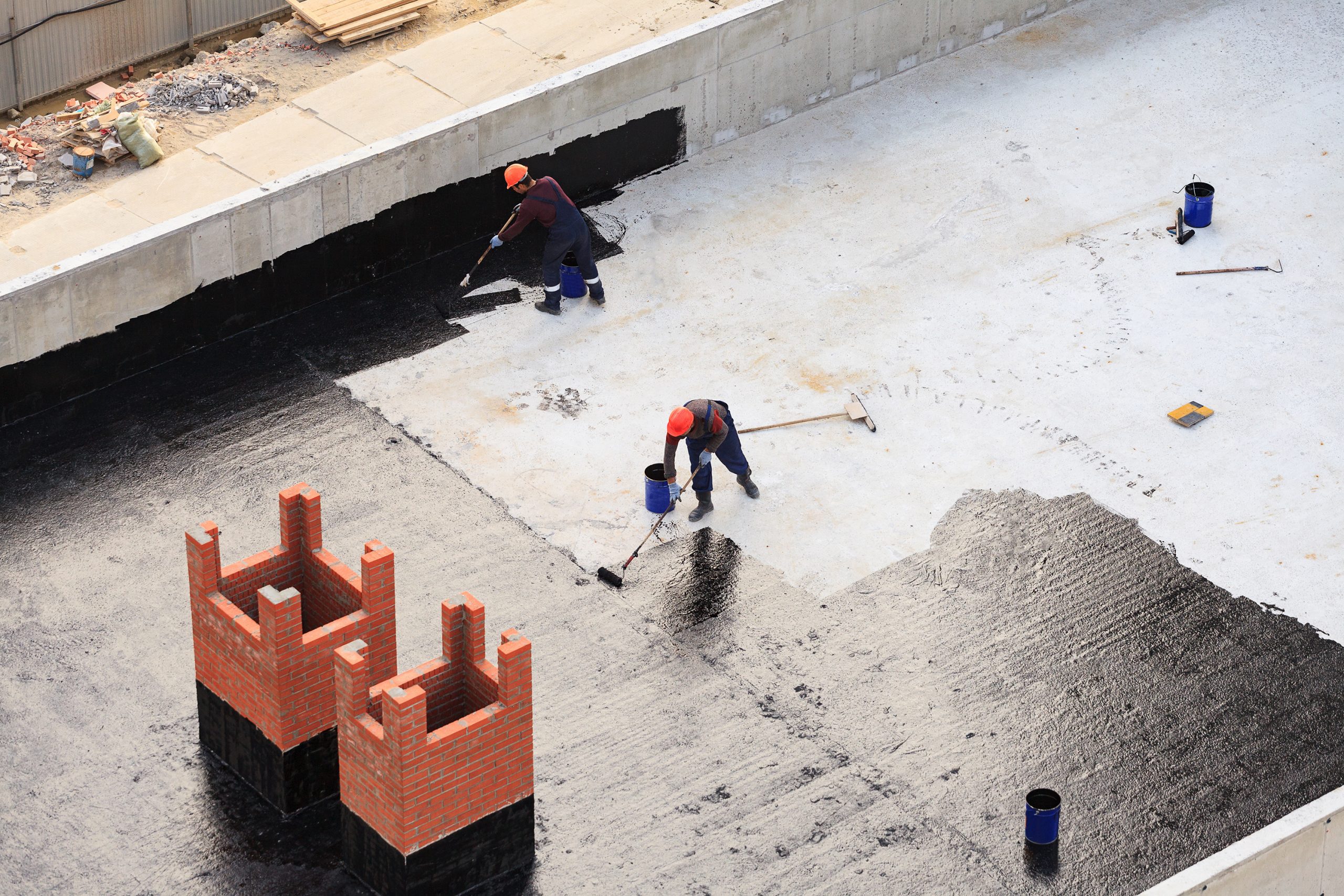A silicone roof coating is a great way to protect your commercial roof from the elements. But what if your existing silicone-coated roof is showing signs of age, perhaps losing its effectiveness or showing visual wear and tear?
Can you recoat silicone roofs, and if so, how often can you do it?
In this guide, we’ll examine the qualities of silicone-coated roofs, and how they can best be maintained, such as via the recoating process.
What is silicone roofing?
Silicone roofing is a type of roof coating that is made from, you guessed it, silicone! It’s applied like regular paint, sprayed or rolled, and results in a very thick application layer that fits like a glove.
Once applied, silicone roof coating bonds to the existing roof’s surface and creates a strong seal that will protect your roof from the elements and extend its life.
Silicone roof coatings are typically white in color and dry with a semi-gloss appearance. Due to their cost and durability, they are often used on commercial buildings, but can also be used on residential homes.
What are the benefits of silicone?
Silicone is a synthetic rubber that has many benefits over traditional asphalt or tar-based roofing materials. It is more durable, flexible, and resistant to weathering and climate extremes. Silicone can also last up to 20 years without needing to be replaced, making it a very cost-effective roofing option.
There are also many environmental benefits to using silicone roof coatings:
- They are very effective at reflecting sunlight, which can help keep your property cooler in the summer months.
- They resist mold & mildew growth and can withstand high winds and heavy rains.
- When properly applied, they qualify as a government-certified cool roof and may qualify for tax rebates.
Lastly, silicone roof coatings dry white and look very fresh, clean, and even shiny like a new car!

Can you recoat silicone roofs?
As discussed, silicone’s durability ensures that it can last for many years without needing to be recoated. However, like all roofing materials, it does have a shelf life and requires maintenance.
Sometimes, the seal can be accidentally punctured. In other cases, heavy weather or foot traffic may wear it down over time. Lastly, like all lightly colored building materials, it can get stained and lose its visual appeal.
These are all instances where a recoat might be needed.
The good news is that yes, you can recoat silicone roofs. In fact, it’s recommended that you do so every 5-10 years, depending on the material underneath the silicone coat, and the type of weather it must endure.
If your roof is starting to show signs of wear and tear, it is important to have it inspected by a professional before applying a new coat of silicone. Sometimes, the fix does not require a full recoat and could be achieved with a simple patch or partial recoat.

How to recoat a silicone roof
The process of recoating a silicone roof is very similar to applying the first coat.
1. Use a pressure washer to clean the roof surface. This step is crucial in order to ensure that the new coating will adhere properly. Make sure that all debris is removed and ensure the surface is free of any dirt, debris, or stains.
2. Apply a wash & primer. This will help the new coating better adhere to the existing layer of silicone. The primer will also help you distinguish between new and old surfaces due to the similarity of their colors.
3. Apply the new silicone coating layer. You can use a paint roller or brush to apply the coating evenly, but a professional sprayer is best. This ensures that the application layer is even and fully applied. Follow the manufacturer’s instructions for the best results.
4. Allow 24-48 hours for the new coating to dry. Most commercial products can be walked on within 12-24 hours, but it’s important to ensure the surface is completely dry before walking on it or exposing it to weather conditions. If you can, it’s best to seal off the area to make sure nobody walks on the surface while it’s drying.
It’s important to follow safety protocols, including the use of properly secured ladders & lifts, and using fall protection equipment when working at heights. As silicone fumes can be quite strong, it’s recommended to wear a paint respirator to avoid inhalation over long periods of time.
Once complete, this process should result in a gorgeous and even coat of silicone that cleanly bonds to the old coat and will extend the roof’s life by another decade.
Need a hand with the process? Contact us for a free quote and we’ll guide you through the process.
When to recoat a silicone roof
A silicone roof should be recoated when it begins to show signs of wear or when the manufacturer recommends it. You should also immediately address areas that become damaged by traffic or weather. In general, most manufacturers recommend recoating every 5 to 10 years.
Unsure if your roof is due to be recoated? Give us a call at (844) 915-ROOF and we’ll gladly take a look. Sometimes, all it takes is a quick phone call and a picture or two.


